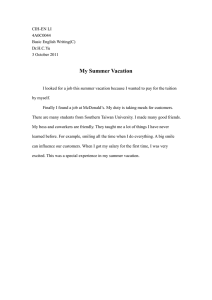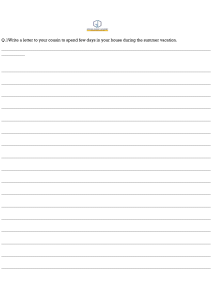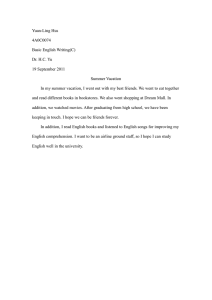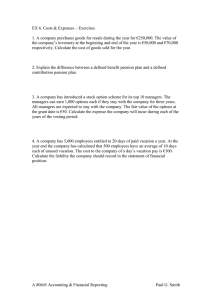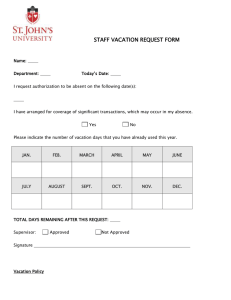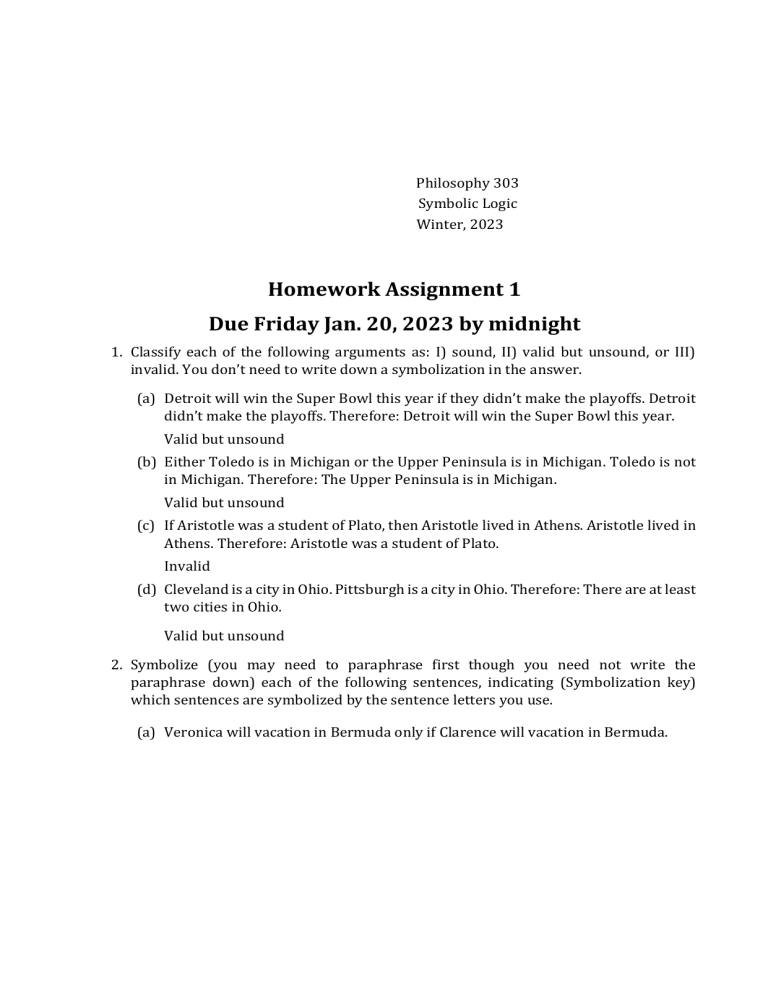
Philosophy 303 Symbolic Logic Winter, 2023 Homework Assignment 1 Due Friday Jan. 20, 2023 by midnight 1. Classify each of the following arguments as: I) sound, II) valid but unsound, or III) invalid. You don’t need to write down a symbolization in the answer. (a) Detroit will win the Super Bowl this year if they didn’t make the playoffs. Detroit didn’t make the playoffs. Therefore: Detroit will win the Super Bowl this year. Valid but unsound (b) Either Toledo is in Michigan or the Upper Peninsula is in Michigan. Toledo is not in Michigan. Therefore: The Upper Peninsula is in Michigan. Valid but unsound (c) If Aristotle was a student of Plato, then Aristotle lived in Athens. Aristotle lived in Athens. Therefore: Aristotle was a student of Plato. Invalid (d) Cleveland is a city in Ohio. Pittsburgh is a city in Ohio. Therefore: There are at least two cities in Ohio. Valid but unsound 2. Symbolize (you may need to paraphrase first though you need not write the paraphrase down) each of the following sentences, indicating (Symbolization key) which sentences are symbolized by the sentence letters you use. (a) Veronica will vacation in Bermuda only if Clarence will vacation in Bermuda. A⇔B A: Veronica will vacation in Bermuda B: Clarence will vacation in Bermuda (b) Clarence will not vacation in Bermuda but Robert will vacation in Bermuda. ¬A ∧ B ¬A: Clarence will not vacation in Bermuda B: Robert will vacation in Bermuda (c) If the Red Sox lose and the Twins don’t win tonight then the Yankees will win the pennant. (A ∧ ¬B) C (A ∧ ¬B): The Red Sox lose and the Twins don’t win C: The Yankees will win the pennant 3. Draw a shortened truth-table to show that the following set of sentences is truthfunctionally consistent: (A ∨ B) → C, C ∧ (D → A),A ↔ (B → D) 4. Draw a truth table for these sentences and state if they are truth-functionally true,truth-functionally false or truth-functionally indeterminate. (a) (E ∨ H) ∨ (¬E →¬H) (b) ([(C ↔ D) ∧ (D ↔ E)] ∧ C) ∧¬E (c) G ∨ (F → G) 5. Draw a truth table to show the given argument is valid, or a shortened truth-table to show it is invalid. (The conclusion is the last sentence on the list.) (a) B ∧ (A ↔¬C),(C → A) ↔ B,¬B ∨ A, ¬(A ∨ C) (b) ¬(Y ↔ A),¬Y,¬A,W (c) [A ∧ (B ∧ C)] ↔ (C ∨ B),B →¬B,C ∨¬A
